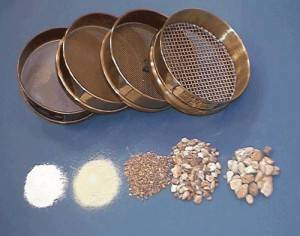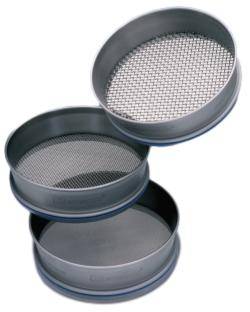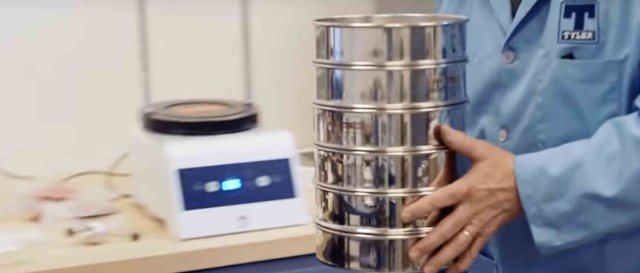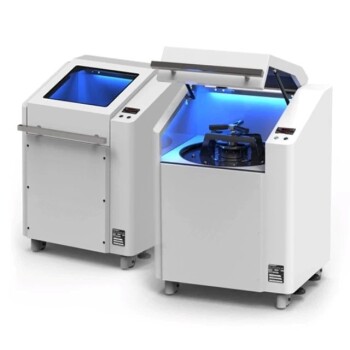Introduction to Sieving Machines
In this article, We will uncover the role of sieving machines in separating fine materials from coarse materials, and the importance of sieve analysis in achieving accurate results in material analysis. Additionally, we will explore the functions, applications, and maintenance of sieving machines, shedding light on their significance in various industries.
Functions of Sieving Machines

Sieves can be used for testing various materials such as chemicals, powders, oils, and other fluids to yield information about contaminants, byproducts, defects, and particle density. This multifaceted scope of examinations allows researchers to learn about the attributes of new or existing materials in the production process, thereby improving the quality of products, operational efficiency, and the maintenance of expensive equipment.
The number of sieves in a sieve stack can vary, typically ranging between 1-18. Each sieve in the stack has mesh filters with different mesh sizes, with the sieve at the top having the largest mesh holes and the subsequent sieves having tighter mesh sizes.
The sieving process involves passing particles of varying sizes through the mesh filters in a series of chambers to achieve complete separation. This technique is used to separate particles of different sizes from a mixture. For example, dry silica sand can be separated down to 50 microns using most sieve shakers, but materials that tend to clump or have high static electricity characteristics may require additional techniques such as wet sieving or ultrasonic agitation.
In sieving machines, the material is separated through wire-mesh, with smaller particles passing through different mesh widths than larger particles. Analyzing sieves with a range of mesh sizes are used to provide an optimized solution for sieving different materials. However, these sieves may become contaminated over time and require proper cleaning. Ultrasound cleaners are ideal for maintaining analysis sieves to assure long-term application.
Some sieving machines perform three-dimensional sieving movements, accelerating the sieve material vertically through the meshes and spreading it in a circular movement over the sieve surface. This approach not only saves time for the operator but also eliminates the need for manual sieving in some cases, ensuring ideal repeatability of results.
Applications of Sieving Machines

In various industries, sieving machines play a crucial role in analyzing a wide range of materials, including sands, soils, construction materials, food products, and chemicals. The versatility and importance of these machines stem from their ability to accommodate different materials through a variety of mesh sizes. The use of high-end sieving machines is particularly essential in laboratory settings, where precision and efficiency are paramount in analyzing materials.
Key Applications
-
Metal Powder Analysis: Sieving machines are utilized in industries working with metal powders such as aluminum, lead, zinc, copper, iron, nickel, and alloys. These machines aid in the precise screening and particle size detection of these materials, ensuring quality control and consistency in production processes.
-
Chemical Industry: In the chemical sector, sieving machines are employed for the analysis of various substances including resins, plastics, rubber additives, dyes, and fillers. The machines assist in separating and categorizing different chemical components based on particle size.
-
Food Processing: Sieving machines are instrumental in the food industry for particle size analysis and separation of food products. From flour and cocoa to condiments and additives, these machines help maintain product uniformity and quality by ensuring consistent particle sizes.
-
Abrasives Industry: Industries working with abrasives such as glass beads, alumina, corundum, and quartz sand utilize sieving machines for particle analysis and classification. These machines aid in the quality control and performance improvement of abrasive materials.
Industry-specific Applications
-
Food Industry: Dry three-dimensional vibrating sieves are employed for food particle size analysis and separation in the food industry. These sieving machines assist in ensuring the uniformity and quality of food products by screening raw materials and separating different ingredients as needed.
-
Building Materials Industry: Sieving machines are used in the building materials sector for particle analysis and screening of materials like sand, gravel, cement, and concrete. By classifying particles and screening components, these machines enhance product quality and performance in various construction projects.
-
Mining Industry: In mining operations, sieving machines assist in screening and classifying ores and mineral powders. These machines enable particle size analysis to improve ore quality and processing efficiency, as well as the separation and screening of different ore components to meet specific processing requirements.
In conclusion, the applications of sieving machines are diverse and critical across industries, from ensuring consistent product quality in food processing to enhancing construction material performance in building projects. The evolution of high-end sieving technologies has revolutionized material analysis processes, making sieving machines indispensable tools in modern laboratory settings.
Sieve Shakers: Automation for Particle Separation

Sieve shakers are designed to automate the agitation of particles for separation and distribution based on their sizes. There are two main types: mechanical and electromagnetic sieve shakers, each with unique operating mechanisms.
Mechanical Sieve Shaker
Mechanical sieve shakers utilize a motorized system to create collaborative motions to agitate the sieve stack. This motor generates either a singular oscillating motion or a dual oscillating and tapping motion, depending on the specific model. The vibratory frequency and amplitude of sieving is consistent, ensuring the accuracy of test results and repeatability.
Benefits over Manual Sieve Shaking
Mechanical sieve shakers offer several advantages over manual agitation methods. They provide greater accuracy, consistency, and time-saving capabilities, making them ideal for applications where repeatable tests are required. Additionally, using a sieve shaker is a more efficient method compared to manual hand sieving, as it can run automatically once the timer is set up, reducing the sieving time significantly.
Flexibility and Ease of Use
These shakers also offer more flexibility than manual hand sieving, especially when the sieving analysis requires assistance with liquid or glass beads. Users can adjust sieving power and speed according to the size, weight, and density of the samples, making them suitable for a wide range of laboratory testing purposes.
In summary, mechanical sieve shakers provide accurate, consistent, and efficient particle separation, offering significant advantages over manual sieve shaking procedures. Their automation capabilities make them essential for quality assurance and quality control needs in various industries.
Maintenance and Care of Sieving Machines
When it comes to cleaning analysis sieves, especially those with finer mesh openings, using an ultrasonic cleaner can be highly effective. Ultrasonic cleaners are designed to vibrate and clean sieves with small openings, ensuring thorough and efficient cleaning without damaging the mesh structure. It is important to note that using an oven, dishwasher, air pressure, acidic solutions, or physical force to clean or dry the sieves can cause damage and should be avoided at all costs.
Proper storage of test sieves is also crucial for maintaining their quality and longevity. They should be stored in a clean, dry, and controlled environment to prevent contamination and damage.
Test sieves are vital technical instruments used for particle separation across various industries such as agriculture, mining, and more. To ensure accurate and reliable results, it is imperative to take proper care of sieves. Any deviation from their specifications can lead to quality issues, resulting in financial and time losses for the company.
Our sieving machines play a crucial role in providing high precision and functionality during product analysis. They are utilized in diverse areas, analyzing materials ranging from sands, soils, and construction materials to food and chemical products. It is essential for sieving machines to cover a wide range of mesh sizes, as different materials require different mesh specifications. Traditional sieving machines may not suffice in laboratories, necessitating high-end products with digital indication of the sieving process and support for both dry and wet sieving.
In sieving machines, the material is separated through a wire-mesh, where smaller particles are distinguished by different mesh widths from larger particles. Analysis sieves with various mesh sizes are employed to optimize the sieving process for different materials, Proper cleaning of these sieves is crucial to prevent contamination.
Related Products
- Laboratory Test Sieves and Vibratory Sieve Shaker Machine
- Laboratory Wet Three-Dimensional Vibratory Sieve Shaker Machine
- Vibratory Sieve Shaker Machine Dry Three-Dimensional Vibrating Sieve
- Three-dimensional electromagnetic sieving instrument
- Laboratory Vibratory Sieve Shaker Machine Slap Vibrating Sieve
Related Articles
- Three-Dimensional Vibrating Sieve: Working Principle and Application Fields
- The Ultimate Guide to the Application and Benefits of Vibratory Sieve Shaker in Laboratory Testing
- The Role of Powder Characteristics in Cold Isostatic Pressing
- The Scientific Principle of Sieving: Understanding Particle Size Distribution and Laboratory Test Sieves
- FTIR Pellet Press The Game-Changer in Spectroscopy Analysis












